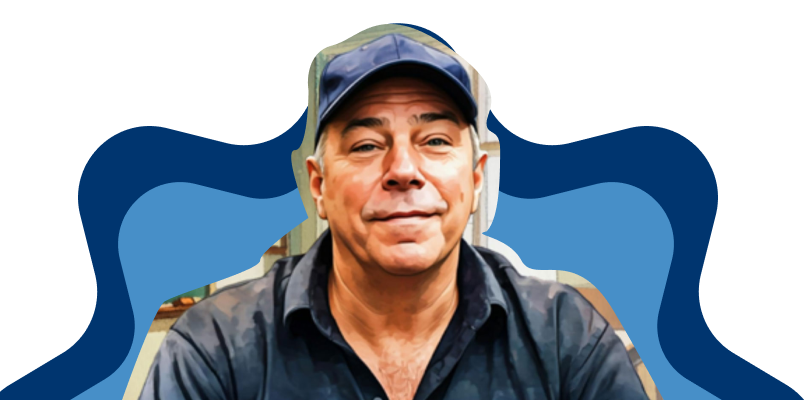Since publishing my first book last year, I have had the pleasure of getting to know many independent booksellers, and my appreciation and respect for the independent bookstore has only grown. These stores are owned and staffed by people who love books and are willing to spend significant portions of their lives reading, ordering, stocking shelves, hand-selling their favorite titles, and talking about the books and authors they love most, all while not getting rich.
But these are troubled times for the independent bookstore, as retailers like Amazon and Barnes and Noble slash their profits with discount prices and enormous inventories. Over the past ten years, indie bookstores have gone out of business frighteningly. At this point, those that continue to prosper only do so because of a loyal customer base, a sound business plan, and an attachment to these stores that Tyler Cowen of Slate refers to, at least in part, as “affectation—a self-conscious desire to belong a particular community.”
So what is to be done for the indie bookstore to survive? Over the last six months, I have thought long and hard about this subject, and I would like to humbly propose my plan for the survival of the independent bookstore. While I initially thought this would be written as a single blog post, I now see that this will need to be a series of posts I will publish over the next several days.
All of my suggestions center upon one belief:
Independent bookstores must reach out to the community at levels never before seen. Unable to compete with the inventory of Barnes and Noble, the convenience of Amazon, or the prices at either retailer, indies must give people a reason to return to their stores repeatedly. This is essential. While community members often profess respect and adoration for their local, independent bookstore, they are simply not returning to these stores enough to allow them to survive. This is characterized best in the 1998 film You’ve Got Mail, in which the delightful Shop Around the Corner is put out of business by a big box store run by Tom Hanks’ character. Despite the love that the community feels for Meg Ryan’s little store and the community protest over the invasion of the big box outlet, Tom Hanks ultimately wins, putting The Shop Around the Corner out of business and still turning out to be the nice guy. The former owner of the indie bookstore turned her attention to writing and ended up with the guy who put her out of business.
Think about it. The ruination end of The Shop Around the Corner is almost romanticized. Its loss is seen as natural and inevitable, and the audience essentially leaves the movie theater in agreement.
The survival of the indie bookstore is an uphill battle.
Creating a destination rather than simply a bookstore solves these problems. Our page-turning, book-obsessed independent store owners must become more than book experts. They must become industry revolutionaries, transforming their stores into their communities’ cultural, academic, and intellectual hubs. Independent bookstores must become the gathering places of those who seek the light.
Here is how it could be done:
First and foremost, they must begin selling coffee, juices, and pastries, even if they must sacrifice significant shelf space. The independent bookstore will never be able to compete with the big box stores or online outlets on inventory, so they must stop trying. Give up the space. Instead, they must do a better job at soliciting the business of the browser rather than the targeted buyer. If a friend recommends a book to me and I want to begin reading the book relatively soon, I am likely to purchase the book at the most convenient location possible. While this could be an indie store, it’s just as likely to be a big box store. I will make my purchase at the store I drive by first. In these cases, proximity wins. Indie bookstores must make their stores browsing destinations where customers can spend an hour or more on a Sunday afternoon sifting through shelves, asking staff members for recommendations, and enjoying the company of a spouse or friend. For these purposes, food and drink are a MUST. If my wife and I want to spend an afternoon browsing a bookstore, we are always going to choose a place where we can sit down and have a coffee or a soda, so if the bookstore cannot offer me these simple amenities, I am likely to take my browsing elsewhere. It need not be much. Good coffee, bottled water, soda and juices, a small selection of bite-sized morsels, and a handful of small tables and chairs are all required. Unfortunately, I have shopped at too many indie stores that do not offer these simple amenities, and many had plenty of space to do so. In fact, one of my local indie bookstores does not even allow food or drink inside their store. This makes no sense to me, and it has kept me out of their store numerous times.
Next, indie stores must offer free Wi-Fi. It costs almost nothing to provide this service and will give people another reason to visit the store. More importantly, it promotes a forward-thinking, tech-friendly, intellectual atmosphere. McDonald’s recently began serving its customers free Wi-Fi, and I couldn’t have been more thrilled. Have I used their service yet? No. But I’ve used Panera’s free service many times and now find myself thinking of McDonald’s in the same favorable light. Borders understands this and has begun doing the same. Indies must follow suit.
Okay, now that you’re serving drinks and the Internet to your customers, how will you get them into the store? This is where community outreach on a grand scale begins.
First, reach out to the local school systems. One of my best friends is a kindergarten teacher who has established a unique partnership with a local bookstore. His students write, illustrate, and bind books in class, and then the bookstore hosts an evening where these student-authored books are placed on a designated shelf and “sold” to family and friends. The students can see their book on sale in an actual bookstore and experience the joy of their first sale. It’s a powerful literary experience for these five-year-olds, and I can just imagine their parents’ pride in watching their little ones become writers. For the bookstore, it means that their store is flooded with potential customers on an evening when business would typically be slow, and the goodwill and loyalty that this program must create with the children and their parents is immeasurable. It’s a simple and perfect way for a bookstore to connect with an enormous base of potential customers. Yet, since my friend has begun this partnership, the bookstore has done nothing to foster similar alliances with the other thirteen elementary schools in town. It remains a one-teacher, one-classroom program for reasons I can’t comprehend. `
Outreach to the schools need not be limited to kindergarten. Indie bookstores could also reach out to high school teachers, collaborating on the books students will study in the coming semester. While the school system provides these books to students, indies could also make these titles available at a discount if students want to own the book to take notes in the margins. Indies could also organize study groups for these students, setting aside a space and time for them to meet. Indies could even tap into their knowledgeable staff to provide academic support and guidance at these study sessions.
Even better, independent bookstore owners could foster partnerships between local authors and high school teachers to create unique opportunities for students to read a book by a local author and then meet and interact with them. Serving as the coordinating arm of the program, an indie bookstore could recommend books written by local authors to high school teachers, who could then purchase those books and teach them in class. The bookstore could then set up an appearance by the local author in their store, timed to coincide with the book’s completion in class. It’s a win-win-win for all involved. The indie bookstore has the opportunity to sell books in bulk to the local high school and adds a well-attended event to its calendar. The author enjoys an immediate bump in sales and has their book added to a high school syllabus, increasing the possibility of it being used at other schools and thus guaranteeing future sales. The teachers and students benefit from the unique opportunity to read a book and then meet the author about whom they have spent so much time studying. I am engaged in a similar partnership, but rather than being organized by a local store, it was put together by the town’s library. In March, I will spend two weeks teaching writing to a group of high school students at the local high school. At the end of the two weeks, the program will culminate with my appearance at the local library, where, in addition to speaking about my book, I will allow a couple of my writing students to read something they have written.
Am I happy to be appearing at the library? Of course.
But if the event were at a bookstore, I’d be just as pleased with the opportunity to sell books to the people attending. This program was set up by a high school teacher who coordinated with the town librarian, but why couldn’t my indie bookstore have done it instead?
These are just a few simple ideas that would increase the sales, visibility, foot traffic, customer loyalty, and the overall impact of the independent bookstore on the community. They are relatively easy and inexpensive to implement and would result in immediate and long-term benefits to the store. Ignoring these suggestions is like leaving money on the table.
Later in the week, I’ll post part two of what will probably be a three-part series, in which I’ll move beyond school outreach into other community segments with just as much potential in terms of sales, marketing, and profitability.









